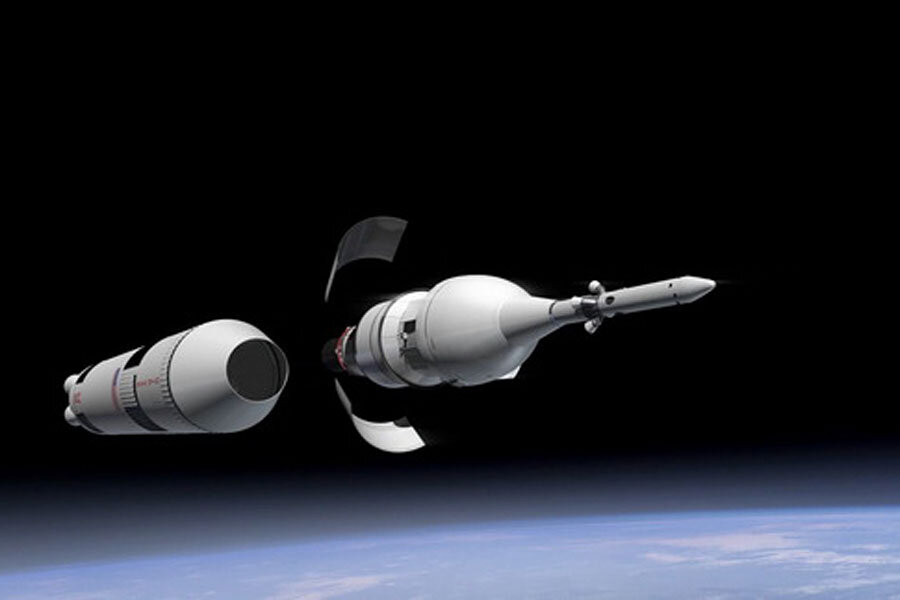NASA's Orion test flight: What we know so far
Loading...
Sen—NASA’s first new human spaceship since the shuttles and the first since Apollo designed to fly beyond low-Earth orbit is poised for an unmanned, debut trial run Thursday.
The 11-foot (3.3-meter) tall, 16-foot (5 meter) wide gumdrop-shaped Orion capsule, built by Lockheed Martin Corp, is perched on top of a United Launch Alliance Delta 4 Heavy rocket at Cape Canaveral Air Force Station in Florida.
Liftoff is targeted for 7:05 a.m. EST/1205 GMT Thursday. Meteorologists were predicting a 60 per cent chance of acceptable weather for liftoff during the 2.5-hour launch window.
Though relatively short in duration—the entire mission from liftoff to splashdown in the Pacific Ocean is expected to last just 4.5 hours—Orion’s test flight is considered a critical early step for developing the technologies needed to one day fly astronauts to and from Mars.
Launching on the heavy-lift Delta 4, currently the biggest rocket in the U.S. fleet, will position Orion more than 3,600 miles (5,794 km) from Earth, farther than any spacecraft designed to carry people has been since the last Apollo moon mission in 1972.
Since then, the United States, as well as other space-faring nations, have stuck closer to home, with the space shuttles and the International Space Station flying just a few hundred miles above the planet’s surface.
Orion is designed to be a game-changer. Its first mission with crew, slated for around 2021, is expected to loop high around the Moon. Ultimately, NASA intends to fly astronauts to Mars.
“Thursday is a huge day for us. Flying Orion is the beginning of exploration, it’s the beginning of actually putting Orion into space,” NASA program manager Mark Geyer told reporters at a prelaunch press conference on Tuesday.
The flight will test 13 of 17 high-risk technologies that need to be perfected before Orion enters operational service. “We’re testing the riskiest systems before we have any people on it,” Geyer said.
The checklist includes several pyrotechnic separation events, including the service modules fairings and jettisoning the launch abort system, as well as Orion’s heat shield, parachutes, avionics and computers.
Orion will be positioned about 15 times farther than where the space station flies so that it can re-enter the atmosphere with almost as much speed and force as a spaceship returning from lunar orbit.
Engineers want to know if the shield will ablate as computer models predict as it heats up to 4,000° Fahrenheit (2,200° C) during re-entry.
“If there are subtleties in how the vehicle behaves with the environments or subtleties with how systems actually behave with one another during flight, my hope is that we find them on this test flight. That’s what it’s all about,” Geyer said.
Related Links:
Europe to build Orion service module
NASA's Orion capsule moved to launch pad
Original story from Sen. © 2014 Sen TV Limited. All rights reserved. This material may not be published, broadcast, rewritten or redistributed. For more space news visit Sen.com and follow @sen on Twitter.







